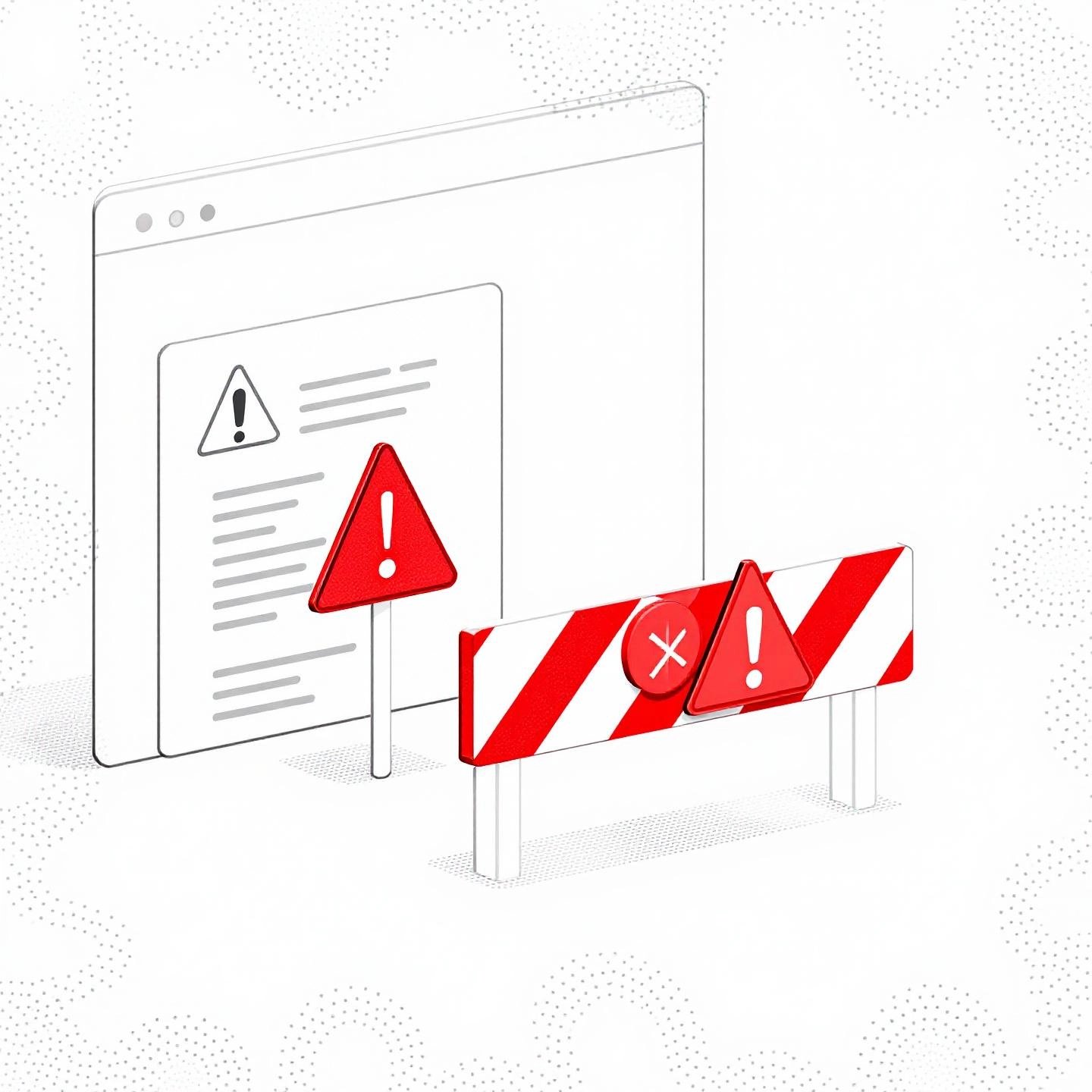Why High-Quality Guest Posting Sites Remain Essential for Growth-Driven Brands
Imagine this: You’ve invested heavily in content, SEO, and social media, but you’re still hitting a ceiling with organic reach and authority. Sounds familiar? For businesses and marketers who already know the basics, the real challenge is moving beyond scattershot outreach to a strategy that delivers concrete results. That’s where the smartest brands turn to guest posting sites—not just any sites, but the best guest posting sites that can truly move the needle.
Why do these platforms still matter—even as digital marketing evolves? The answer is simple: guest posting remains one of the most effective ways to earn high-quality backlinks, amplify brand visibility, and build lasting authority in your niche. When you publish on a respected site, you’re not just dropping a link; you’re tapping into an established audience, earning credibility, and signaling trust to search engines. According to recent insights, 79% of editors consider guest blogging a powerful content marketing tactic, reflecting its alignment with publisher and SEO best practices.
But here’s the catch: the landscape is more competitive and data-driven than ever. Gone are the days of mass-emailing generic pitches or accepting any site that offers a backlink. Today’s growth-focused brands demand placements that are:
- Relevant to their industry and target audience
- Supported by strong domain authority and real organic traffic
- Known for editorial rigor and audience engagement
- Aligned with long-term brand and SEO goals
This guide is designed for you—the marketer or business leader ready to take a strategic, ROI-focused approach to guest posting. We’ll walk you through every stage, from pinpointing high-value opportunities to vetting sites and securing impactful placements. Along the way, you’ll learn how to shift from generic outreach to a data-backed, quality-first guest posting strategy that drives measurable growth.
Ready to unlock the full potential of guest posting sites? Let’s dive into the roadmap for finding, evaluating, and winning the best guest posting opportunities in your industry.

Key Metrics That Define High-Quality Guest Posting Sites for Backlinks and Authority
When you’re ready to move past the basics and truly leverage guest posting sites for real SEO gains, you’ll notice that not all opportunities are created equal. So, how do you separate the high quality guest posting sites from those that could actually harm your brand? Let’s break down the essential factors you need to evaluate before pursuing any placement.
What Makes a Guest Posting Site Truly Valuable?
Sounds complex? It doesn’t have to be—if you know exactly what to look for. Imagine you’ve found a site that accepts guest posts. Before you pitch, ask yourself: Will this placement actually boost my rankings, drive qualified traffic, and enhance my authority? Or will it risk your reputation and SEO standing?
Here’s a practical checklist—plus a comparison table—to help you quickly vet any site for quality and long-term value.
| Metric | What to Look For | Why It Matters | How to Evaluate |
|---|---|---|---|
| Domain Authority (DA) / Domain Rating (DR) | DA/DR of 20+ (ideally 40+ for top-tier); avoid sites below 20 | Higher authority signals trust and passes more SEO value | Use Moz or Ahrefs to check DA/DR scores |
| Niche Relevance | Content and audience closely align with your industry | Relevant links carry more weight and reduce spam risk | Review site topics, recent posts, and audience focus |
| Organic Traffic | Consistent, real traffic (150+ visitors/month for DA 20+, 500+ for DA 40+) | Indicates genuine audience and ranking potential | Check with Ahrefs, SEMrush, or SimilarWeb |
| Audience Engagement | Active comments, social shares, and visible readership | Shows real user interest and amplifies your brand reach | Look for recent comments, shares, and newsletter activity |
| Editorial Standards | Clear guidelines, quality control, and unique content | Ensures your content is valued and not lost among spam | Check for guest post guidelines and content quality |
| Do-Follow Link Policy | Allows do-follow backlinks (not just no-follow or sponsored) | Do-follow links directly impact your SEO | Review published guest posts and confirm with webmaster |
| Site Authenticity | Real business, active publishing, no excessive ads or PBN traits | Protects your brand from association with spammy networks | Assess site design, posting frequency, and ad clutter |
Why These Metrics Matter for Guest Posting Sites for Backlinks
- Domain Authority & Organic Traffic: A site with both high DA and real traffic offers the best of both worlds—SEO power and referral visitors. But even a mid-tier site with niche relevance can be valuable if it attracts your target audience.
- Niche Relevance: Google rewards backlinks from sites that make contextual sense. For example, a fintech startup gains more by guest posting on a finance blog than a general news site.
- Editorial Standards: High quality guest posting sites have clear submission rules and maintain content integrity. This keeps your brand in good company and helps your post stand out.
- Engagement & Authenticity: Real sites with active communities amplify your reach and protect your site from future algorithm updates.
Quick Red Flags to Avoid
- Low DA/DR (below 20) or traffic under 100/month
- Irrelevant topics or scattered content focus
- Poor site design, excessive ads, or signs of PBNs
- No editorial guidelines or quality control
- Only offers no-follow or sponsored links
By following this checklist, you’ll ensure every guest post placement supports your SEO, brand authority, and long-term growth. Next, we’ll dive into the ROI trade-offs between free and paid guest posting options—so you can choose the best path for your goals and resources.
Free vs. Paid Guest Posting
When you’re weighing your options for expanding your brand’s reach, you might wonder: Should you focus on free guest posting sites or invest in paid guest posting sites? The answer isn’t always obvious. Both routes have unique advantages and potential drawbacks—so how do you choose the best fit for your goals, budget, and timeline?
Understanding the Key Differences
Imagine you’re launching a new product and want quick visibility on high-authority platforms. Paid placements can get you there fast, but they come with a price tag. On the other hand, free guest posting sites offer opportunities to build organic relationships and credibility, but often require more patience and persistence.
| Factor | Free Guest Posting Sites | Paid Guest Posting Sites |
|---|---|---|
| Cost | No direct financial investment—ideal for tight budgets | Requires monetary investment, which can be substantial for top sites |
| Editorial Control | Less control over publishing schedule and content edits; subject to site owner’s priorities | More control over timing, placement, and sometimes content format |
| Quality & Authority | High-quality, free placements are competitive and limited; may require multiple pitches | Easier access to high-DA, high-traffic platforms; more predictable quality |
| Backlink Value | Varies—often limited to author bio or selective in-content links | Usually allows targeted, do-follow links with anchor text control |
| Scalability | Requires significant time for outreach and relationship building; slower to scale | Streamlined process; placements can be scaled quickly if budget allows |
| Authenticity & Relationships | Fosters genuine industry connections and long-term partnerships | More transactional, but can still build credibility if content is valuable |
| Risk & Perception | Perceived as more authentic by readers; less risk of Google penalties if sites are vetted | May require disclosure (sponsored tags); risk if site quality is poor or irrelevant |
| Time Investment | High—finding, pitching, and following up can be time-consuming | Low—faster turnaround, but requires upfront financial outlay |
Pros and Cons of Each Approach
Free Guest Posting Sites
- Pros:
- Cost-effective—no monetary investment required
- Builds organic relationships and long-term partnerships
- Perceived as more authentic and less promotional (OutrightCRM)
- Cons:
- Highly competitive; harder to secure top placements
- Time-intensive with no guarantee of acceptance
- Less editorial control and slower publishing timelines
Paid Guest Posting Sites
- Pros:
- Guaranteed placement and faster publishing
- Access to high-authority, high-traffic sites
- More control over link placement and content timing
- Cons:
- Requires budget—costs can add up quickly
- Potential perception of less authenticity
- Must vet sites to avoid low-quality or irrelevant placements
Aligning Strategy With Your Goals
Still unsure which path to take? Ask yourself:
- Do you have more time than budget? Free guest posting sites might be the way to build relationships and authority over time.
- Need fast results or access to premium audiences? Paid guest posting sites can help you scale quickly, provided you choose reputable, relevant platforms.
- Want the best of both worlds? A blended approach can maximize reach, authority, and ROI—just ensure every site you target meets strict quality criteria.
Ultimately, the right strategy depends on your resources, objectives, and appetite for risk. Next, we’ll explore the hidden risks of instant approval sites—and why quality and oversight should always come first in your guest posting journey.

The Truth About Instant Approval Guest Post Sites
When you’re searching for quick wins, free instant approval guest posting sites might sound like a dream. Imagine submitting your post and seeing it live in minutes—no waiting, no back-and-forth, and no editorial gatekeepers. But ask yourself: Is this speed too good to be true? What’s the real cost of choosing convenience over quality?
Why Instant Approval Sites Seem Appealing
It’s easy to see the attraction. These platforms promise:
- Immediate publication—no lengthy review process
- Zero upfront cost—ideal for tight marketing budgets
- Minimal content restrictions—almost any topic or link accepted
- Fast accumulation of backlinks for your SEO campaign
But as you’ll notice, the very features that make these sites attractive are often the ones that undermine their value and put your brand at risk.
What Makes Instant Approval Guest Posting Sites Risky?
Before you jump in, consider these warning signs that often accompany free instant approval guest posting sites:
- Association with PBNs (Private Blog Networks): Many instant approval sites are part of PBNs designed solely to manipulate search rankings. Google’s algorithms—and manual reviewers—actively target these networks, leading to devalued links or even penalties.
- Lack of Editorial Standards: If anyone can publish anything, quality control is non-existent. Your content and links may appear alongside spam, irrelevant topics, or even malicious material.
- Poor Audience Engagement: These sites are rarely visited by real users. With no genuine readership, you gain little to no referral traffic or brand exposure.
- Risk of Google Penalties: Accumulating backlinks from low-quality, irrelevant sources is considered a manipulative tactic. Google may penalize your site, causing a dramatic drop in rankings and organic visibility.
- Diluted SEO Value: Backlinks from these platforms are often ignored by search engines or flagged as toxic, meaning your efforts (and risks) yield little to no long-term benefit.
- Zero Control Over Anchor Text or Link Removal: Once your link is live, you have little say in how it’s used—or if it’s ever removed if it becomes problematic.
Real-World Consequences: When "Free" Isn’t Really Free
Imagine investing hours into content creation, only to find your site’s rankings tank because you’ve built a profile filled with toxic links. Recovery from a Google penalty isn’t just time-consuming—it can be expensive and, in some cases, nearly impossible. As one industry guide warns, “the price of free guest blogging can prove to be quite exorbitant, as you will have to clean up the consequences of a toxic backlink profile or Google penalties”.
Why Quality and Oversight Are Non-Negotiable
If sustainable SEO and brand growth are your goals, quality must come first. Focus on:
- Building relationships with reputable sites that have real audiences and clear editorial guidelines
- Ensuring every backlink is relevant, authoritative, and trusted by search engines
- Regularly auditing your backlink profile to remove or disavow risky links
By prioritizing oversight and quality, you protect your brand from short-term setbacks and set the stage for long-term SEO success. Up next, we’ll share advanced tactics for uncovering high-potential guest posting opportunities—without falling into the instant approval trap.
Advanced Google Search Tactics to Uncover Hidden Guest Posting Opportunities
Ever feel like finding the right sites that accept guest posts is like searching for buried treasure? You’re not alone. Basic Google searches often lead to the same overused lists, but with a few advanced techniques, you can discover untapped opportunities that others miss. Ready to level up your prospecting? Let’s break down how to use search operators, niche-specific queries, and competitor analysis to build your own curated list of high-potential guest posting sites.
Mastering Google Search Operators for Guest Posting
When you type a simple query like "write for us" + guest post, you’ll get plenty of results—but most are generic or saturated. To filter for quality and relevance, Google’s advanced search operators are your secret weapon. Here’s how to use them effectively:
- inurl: Finds pages with specific words in the URL. Perfect for spotting submission pages.Example:
inurl:guest-post-guidelinesorinurl:write-for-us - intitle: Locates pages with keywords in the title.Example:
intitle:"submit a guest post"orintitle:"write for us" - site: Restricts results to a specific domain or TLD.Example:
site:.edu "write for us"(great for finding academic or institutional blogs) - " " (Quotation Marks): Forces Google to search for the exact phrase.Example:
"submit guest post" - - (Minus): Excludes certain words from results.Example:
"write for us" -"job"(to avoid job listings)
Actionable Search Strings for Every Niche
Imagine you’re in the travel industry or run a SaaS startup. You’ll want to tailor your search to your audience. Here are some practical, niche-specific queries you can copy and adapt:
- Travel:
travel "write for us"orinurl:travel intitle:"guest post" - Finance:
finance "submit a guest post"orinurl:finance intitle:"write for us" - Marketing:
marketing "contribute an article"orinurl:marketing intitle:"guest post guidelines" - Technology:
technology "become a contributor"orinurl:tech intitle:"submit guest post"
For even more precision, combine multiple operators:site:.com inurl:blog "write for us" -"jobs" (finds .com blogs open to guest posts, excluding job postings)
Digging Deeper: Competitor Backlink Analysis
Why reinvent the wheel? If your competitors are landing quality guest posts, you can too. Use tools like Ahrefs’ Backlink Checker to see where they’re getting published:
- Enter a competitor’s domain into the backlink checker.
- Filter results for referring domains with terms like “guest post,” “contributor,” or “author” in the anchor or surrounding text.
- Eyeball the list for recurring sites in your niche—these are proven to accept guest contributions.
For even more targeted results, search for competitor author names in Google, paired with guest post terms:"[Competitor Author Name]" "guest post" or "[Competitor Author Name]" inurl:author
Step-by-Step to Find Guest Posting Sites
- Brainstorm your target niche and audience.
- Use advanced search operators:
inurl:write-for-usintitle:guest postsite:.org "submit a guest post"
- Mix in your niche keyword:
[your niche] "write for us"[your niche] inurl:contribute
- Analyze competitor backlinks to uncover sites they’ve used for guest posting.
- Check site engagement and authority before pitching (look for comments, shares, and DA/traffic).
By combining these advanced tactics, you’ll uncover a goldmine of sites that accept guest posts—many of which your competitors may have overlooked. Next, we’ll show you how to vet these opportunities for quality and authority, so you only pursue placements that truly move the needle for your SEO and brand.
How to Vet Guest Posting Websites for Backlinks
You’ve uncovered a list of promising guest posting websites for backlinks—now what? Before you invest time in crafting pitches or content, it’s critical to separate real opportunities from potential SEO pitfalls. Ever wondered why some guest posts move the needle, while others barely register? The answer lies in how rigorously you vet each site. Let’s walk through a practical, step-by-step checklist to ensure every placement delivers genuine SEO value and long-term authority.
Step-by-Step Checklist for Vetting Guest Posting Sites
| Step | What to Check | Why It Matters | How to Evaluate |
|---|---|---|---|
| 1. Confirm Niche Relevance | Is the site’s content and audience tightly aligned with your industry or target market? | Relevant backlinks carry more SEO weight and attract a qualified audience. | Scan recent posts, categories, and the About page for topical fit. |
| 2. Analyze Authority & Traffic | Does the site have a strong Domain Authority (DA/DR) and consistent organic traffic? | High-authority, well-trafficked sites pass more "link juice" and boost your rankings. | Use Moz, Ahrefs, or SEMrush to check DA/DR (aim for DA 20+), and validate monthly organic traffic (150+ for DA 20+, 500+ for DA 40+). |
| 3. Review Content Quality | Are articles well-written, original, and in-depth? Does the site avoid spun or thin content? | High-quality content signals editorial rigor and protects your brand reputation. | Read several guest and in-house posts—look for depth, originality, and relevance. |
| 4. Check for Genuine Engagement | Is there visible audience interaction, such as comments, shares, or active social profiles? | Engaged audiences mean your post will reach real readers, not just bots. | Look for recent comments, social shares, and active newsletter sign-ups. |
| 5. Assess Editorial Standards | Does the site have clear guest post guidelines, content requirements, and editorial oversight? | Strong guidelines protect against spam and ensure your content is valued. | Find and review the site’s "Write for Us" or contributor guidelines; check for minimum word counts and quality expectations. |
| 6. Verify Do-Follow Link Policy | Will your backlink be do-follow, or is it marked as no-follow/sponsored? | Do-follow links directly impact SEO; no-follow or sponsored links have less value. | Check published guest posts for link attributes; confirm with the webmaster if unclear. |
| 7. Evaluate Site Authenticity | Is the website a real business or blog (not a PBN or content farm)? | Authentic sites protect your brand from toxic associations and penalties. | Look for a professional design, regular updates, real author bios, and minimal ad clutter. |
| 8. Understand Submission Process & Responsiveness | Is there a transparent submission process and responsive editorial team? | Efficient communication signals a well-managed site and smoother collaboration. | Test the submission form or email; note response times and professionalism. |
Quick Reference: Red Flags to Watch Out For
- Irrelevant or overly broad site topics (not niche-specific)
- Low DA/DR (below 20) and minimal organic traffic
- Signs of spun, duplicate, or ultra-short content
- No visible audience engagement or recent activity
- Unclear or absent editorial guidelines
- All backlinks marked as no-follow or sponsored
- Excessive ads, PBN traits, or anonymous ownership
Why a Rigorous Vetting Process Matters
Imagine landing a guest post on a site that looks great at first glance—only to realize later it’s part of a spammy network or lacks any real audience. Not only does this waste your effort, but it can also harm your site’s rankings and reputation. By following this checklist, you’ll ensure every guest posting website for backlinks you pursue is a true asset to your SEO strategy.
With your vetted list in hand, you’re ready to craft personalized outreach and pitches that stand out—let’s explore how to build a scalable, effective guest posting outreach plan in the next section.

Building a Scalable and Effective Guest Posting Outreach Plan
So, you’ve built a vetted list of high-quality guest posting websites—what’s next? The real challenge begins with guest posting outreach: connecting with site owners, standing out in crowded inboxes, and securing coveted placements. Sounds complex? It can be, especially when you’re aiming for scale and quality. Let’s break down how to make your outreach both effective and efficient, with practical steps you can implement right away.
Personalized Email Pitches
Imagine you’re a blog editor flooded with pitches. Which would you open—a generic template, or a message that references your latest article and explains exactly how the guest post will benefit your readers? Personalization is the key to successful guest posting outreach.
- Research the site and editor: Address the recipient by name and reference specific content or audience interests.
- Lead with value: Explain how your proposed topic fills a gap or aligns with their content strategy, not just your own goals.
- Offer tailored topic ideas: Pitch 2-3 relevant, unique topics that demonstrate you’ve done your homework.
- Showcase your expertise: Briefly introduce yourself and link to writing samples or published guest posts.
Example subject lines that get noticed:
- "Guest Post Idea: [Compelling Topic] for [Site Name]"
- "Loved your post on [Topic]—Here’s a fresh angle for your readers"
Crafting a Compelling Author Bio
Your author bio is more than a formality—it’s a trust signal for both editors and readers. Keep it concise, highlight your expertise, and include a link to your site. For example:
Jane Smith is a SaaS marketing strategist featured on [Site], [Site], and [Site]. She helps startups scale organic growth with actionable content strategies. Connect on LinkedIn or visit [YourWebsite.com].
Follow-Up: Persistence Without Pestering
Even the best pitches get buried in busy inboxes. Following up—politely and professionally—can double your response rate. Here’s how:
- Wait 5–7 days after your initial pitch before sending a brief, friendly follow-up.
- Reference your previous email and offer to adjust your topic or provide more details.
- Limit yourself to two follow-ups; if there’s still no response, move on to other opportunities (Backlink Manager).
Scaling Your Outreach: Tips and Realities
Reaching out to just a handful of sites might work for a one-off campaign, but if you want to scale, you’ll need a system. Consider these tips:
- Organize contacts in a spreadsheet or CRM to track pitches, responses, and follow-ups.
- Use templates for efficiency, but always personalize each message to avoid sounding generic.
- Automate where possible (e.g., with email tools or reminders), but don’t sacrifice the personal touch.
- Be prepared for low response rates—in one campaign, contacting 1,000 sites yielded a 20% reply rate.
Manual outreach is powerful, but it’s also time-consuming. As your campaign grows, you might find yourself spending hours each week on research, personalization, and follow-ups—prompting many brands to explore guest posting services for efficiency and scale (more on this in the next section).
Guest Posting Outreach Do’s and Don’ts
| Do’s | Don’ts |
|---|---|
|
|
By following these best practices, you’ll build a guest posting outreach plan that not only earns placements but also forges real relationships and authority in your space. Next, we’ll explore when and why it might make sense to outsource your guest posting efforts—and how to recognize the tipping point for scaling up with professional help.
How to Future-Proof Your Guest Posting Sites List for 2025 and Beyond
When you think about building your guest posting sites list 2025, it’s tempting to focus on numbers—how many sites can you find, how many backlinks can you secure? But ask yourself: Will a long list of sites actually move the needle, or do you need a more strategic, future-ready approach? The landscape is changing fast, and what worked last year may not deliver results in the coming months.
Why a Simple List Isn’t Enough Anymore
Imagine you’ve gathered dozens of sites that accept guest posts. Sounds like a win, right? But in 2025, Google’s algorithms and user expectations have evolved. Search engines now reward quality, relevance, and authority over sheer quantity. Relying on outdated or generic lists can leave your brand vulnerable to missed opportunities—or worse, declining rankings.
- Algorithm Updates: Google’s focus on Experience, Expertise, Authoritativeness, and Trustworthiness (E-E-A-T) means that only the best guest posting sites—those with real expertise and credible authors—will pass lasting SEO value.
- Editorial Standards Are Rising: More sites are tightening guidelines, requiring deeper, data-backed content and real author bios. Thin, generic posts are quickly filtered out.
- Audience Expectations: Readers want actionable, niche-specific insights, not recycled tips. Brands that deliver value and unique perspectives stand out.
Building Topical Authority and Real Partnerships
Sounds complex? It doesn’t have to be. The secret is to focus less on chasing every opportunity and more on building topical authority and genuine relationships. Here’s how:
- Prioritize Niche Relevance: Target sites that are tightly aligned with your industry and audience. For example, a SaaS company should aim for respected technology or business blogs, not general news sites.
- Showcase Real Expertise: Use author bios that highlight credentials, industry experience, and previous publications. This builds both trust and authority—key E-E-A-T factors.
- Leverage Data and Case Studies: Incorporate first-party data, real-world results, and unique insights to make your content stand out and earn editorial approval.
- Build Relationships, Not Just Links: Engage with editors, share their content, and participate in their communities. Strong partnerships often lead to repeat placements and greater editorial flexibility.
Adapting to New Content Formats and Technologies
The days of only submitting text-based articles are fading. To stay ahead:
- Embrace Multimedia: Add value with videos, infographics, and audio summaries. These formats boost engagement and help your posts stand out on crowded platforms.
- Optimize for Voice and AI: Structure your content for voice search and AI-powered assistants by using clear headings, concise answers, and conversational language (LinkedIn).
- Gather First-Party Data: Use interactive elements like polls or surveys within guest posts to understand and engage your audience directly.
Staying Ahead of Editorial and SEO Trends
To future-proof your strategy, keep these principles in mind:
| Old Approach | Future-Proofed Approach |
|---|---|
| Bulk outreach to generic lists | Targeted pitches to niche, high-authority sites |
| Focus on backlinks only | Emphasis on topical authority and trust signals (E-E-A-T) |
| Text-only articles | Multimedia, data-driven, and interactive content |
| One-off placements | Long-term partnerships and recurring contributions |
By shifting your focus from quantity to quality, and by aligning with the latest editorial and SEO standards, your guest posting efforts will not only survive but thrive as algorithms and audiences evolve. In the next section, we’ll explore when it’s time to consider outsourcing your guest posting campaigns—and how to scale without sacrificing quality or compliance.

When and Why to Outsource Your Guest Posting Campaigns
Ever find yourself wondering, "Is it time to hand off my guest posting efforts to the pros?" If you’re juggling outreach, content creation, and campaign tracking—while trying to scale your results—the answer might be yes. Let’s break down the tipping points for guest posting outsourcing, so you can decide when professional guest posting services are the smarter, more strategic move.
When Internal Efforts Hit a Wall
Imagine you’ve built a solid process—prospecting, vetting, pitching, and writing. But as your business grows, you start to notice:
- Your team spends more time on outreach than on core business activities
- The quality or consistency of placements starts to slip
- Results plateau, even as you increase your effort
- It’s tough to keep up with changing editorial standards and SEO best practices
- You lack access to high-authority, niche-specific sites
- Tracking ROI and campaign performance becomes overwhelming
Sound familiar? You’re not alone. Many brands hit these roadblocks as they scale, and that’s where outsourcing comes into play.
Main Triggers for Outsourcing Guest Posting
- Resource Constraints: Limited in-house bandwidth or expertise for sustained outreach and content production
- Need for Scalability: Ambitious growth goals that require more placements than your team can handle
- Desire for Consistency: Ensuring every guest post meets strict quality, brand, and SEO standards
- Access to Networks: Wanting connections with high-authority sites that are hard to reach directly
- Faster Results: Looking to accelerate link-building and brand visibility without the learning curve
- Comprehensive Reporting: Need for clear tracking, analytics, and campaign optimization
The Advantages of Professional Guest Posting Services
So, what do you actually gain by outsourcing? Here’s what leading industry research and expert experience reveal:
- End-to-End Management: From prospecting and pitching to content creation and performance tracking, every step is handled by specialists
- Proven Processes: Established workflows and editorial relationships maximize acceptance rates and backlink quality
- Access to High-Authority Sites: Outsourcing partners often have exclusive connections with reputable platforms in your niche
- Consistent, High-Quality Content: Professional writers and editors ensure every post aligns with both host guidelines and your brand voice
- Time and Cost Efficiency: Free up your team to focus on core strategy, while experts handle the heavy lifting
- Performance Analytics: Detailed reporting on placements, traffic, and SEO impact to guide future efforts
For instance, outsourcing guest posting allows brands to scale outreach, secure premium placements, and maintain a steady stream of high-value content—all while minimizing internal workload and risk.
How BlogSpark Streamlines Guest Posting Outsourcing
Imagine a platform that combines AI-driven content creation with a network of high-authority publishers. BlogSpark offers businesses a seamless way to:
- Automate prospecting and keyword research for targeted outreach
- Generate SEO-optimized, original guest posts in your brand’s voice
- Integrate directly with publishing workflows for faster turnaround
- Track every placement and measure ROI with built-in analytics
Whether you’re a marketing agency, startup, or established brand, leveraging a solution like BlogSpark can help you scale your guest posting campaigns without sacrificing quality, compliance, or strategic focus.
"The real benefit of outsourcing your guest blogging to a third party is that we take care of everything from start to finish—we take away that headache and hassle. You pay for your blog posts and we go off and do all the research, link prospecting, contacting, relationship development, content writing and facilitation of publishing." (PPC.org)
Ultimately, the decision to outsource comes down to your goals, resources, and appetite for growth. If you’re ready to accelerate results, ensure consistency, and tap into a proven network, professional guest posting services offer a clear path forward. Next, we’ll wrap up with the key takeaways and how to turn your strategy into long-term brand authority.
Conclusion
When you look back at the strategies explored throughout this guide, one theme stands out: success with guest posting sites is all about quality, consistency, and a long-term mindset. So, what does it really take to unlock the best guest posting sites for your business and transform your outreach into sustainable growth?
Key Takeaways for Using Guest Posting Sites for Business
- Prioritize Quality Over Quantity: Flooding the web with low-value posts may seem tempting, but it rarely delivers lasting results. Instead, focus on fewer, high-quality placements on authoritative, niche-relevant sites. This approach protects your brand and maximizes SEO impact.
- Follow a Rigorous Vetting and Outreach Process: Every step—from researching prospects to pitching and content creation—should be methodical. Use checklists, advanced search tactics, and strict quality criteria to ensure your efforts land on the right platforms.
- Build Relationships, Not Just Links: Guest posting is about more than backlinks. Genuine connections with editors, influencers, and audiences open doors to recurring opportunities and industry trust.
- Measure and Adapt: Track the performance of each post—traffic, engagement, and conversions. Use this data to refine your strategy and double down on what works.
- Think Long-Term: The real value of guest posting sites for business comes from building topical authority and brand recognition over time. Continuous learning, content updates, and adapting to algorithm changes keep your efforts future-proof.
Empowering Your Next Steps—In-House or With a Trusted Partner
Sounds like a lot to manage? It can be. Whether you choose to keep your guest posting in-house or partner with a solution like BlogSpark, the principles remain the same: prioritize quality, maintain a clear process, and never lose sight of your brand’s unique voice.
- If you have the time and expertise, build a repeatable system for prospecting, outreach, and content creation. Stay disciplined and keep learning from each campaign.
- If you’re ready to scale faster or want to tap into a proven network, outsourcing to a trusted platform can help you reach more of the best guest posting sites—without sacrificing editorial standards or compliance.
"Guest posting isn’t a quick fix—it’s a strategic investment in your brand’s authority, visibility, and long-term growth. When you treat every placement as a chance to deliver value, you build a foundation that supports your business for years to come."
Now, imagine your brand featured on respected industry blogs, recognized as a thought leader, and consistently attracting new audiences. That’s the true potential of a strategic, quality-driven guest posting approach—managed on your terms or with a partner like BlogSpark. The next move is yours: take action, stay committed, and watch your authority and growth soar.
Frequently Asked Questions About Guest Posting Sites
1. Which platform is best for guest posting?
The top platform for guest posting depends on your niche, goals, and budget. Look for sites with strong domain authority, real organic traffic, and clear editorial standards. For streamlined campaigns and access to high-quality sites, platforms like BlogSpark offer scalable solutions that combine AI-driven content with a network of reputable publishers.
2. What are guest post sites?
Guest post sites are websites or blogs that accept contributions from external writers. These platforms allow businesses and marketers to publish valuable content, earn authoritative backlinks, and reach new audiences. High-quality guest post sites typically have strict editorial guidelines, an engaged readership, and a focus on relevant industry topics.
3. How to search guest posting sites?
To find guest posting sites, use advanced Google search operators like inurl:write-for-us or intitle:"submit guest post" combined with your niche keyword. Analyze competitor backlinks to discover where industry peers are contributing. Always vet each site for authority, relevance, and engagement before pitching.
4. What are the risks of instant approval guest posting sites?
Instant approval guest posting sites often lack editorial oversight and may be part of spammy networks or PBNs. Using these sites can expose your brand to low-quality backlinks, poor audience engagement, and even Google penalties, harming your SEO and reputation. Always prioritize quality and vet every placement.
5. When should you consider outsourcing guest posting?
Consider outsourcing guest posting when your internal resources are stretched, you need to scale placements quickly, or want access to exclusive high-authority sites. Professional services like BlogSpark manage outreach, content creation, and performance tracking, allowing you to focus on strategy while ensuring quality and compliance.




